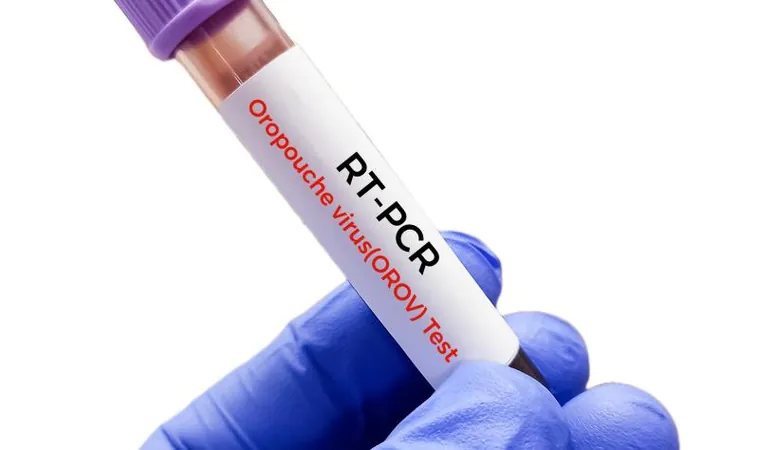
Shocking Discovery: Oropouche Virus Found in Semen 16 Days Post-Infection – What You Need to Know!
2024-10-08
Author: Wei
A groundbreaking study just published in *Emerging Infectious Diseases* reveals that the Oropouche virus, an emerging zoonotic arbovirus, can be detected in semen up to 16 days after symptom onset, raising alarming questions about the risk of sexual transmission. This research highlights the potential for this virus, primarily transmitted by biting midges and Culex quinquefasciatus mosquitoes, to pose a significant public health concern.
Uncovering Oropouche: More Than Just a Cold
Typical infections from the Oropouche virus present with flu-like symptoms but can escalate to serious conditions like meningitis or meningoencephalitis. Originally endemic to the Amazon region, cases have now emerged worldwide, with notable outbreaks reported in the Caribbean, Europe, and the United States—Florida has alone recorded approximately 90 cases.
Historically, the virus has been linked to severe pregnancy outcomes such as microcephaly, paralleling the terrifying impacts of Zika virus outbreaks that made headlines. The implications for maternal health, especially in regions where the virus is prevalent, are deeply concerning.
A Real-Life Case Study
The study centers on a 42-year-old Italian male who contracted the virus during a trip to Cuba in July 2024. Within a day of returning, he experienced high fever and other flu-like symptoms. Despite initial diagnosis challenges, reverse transcription polymerase chain reaction (RT-PCR) tests confirmed Oropouche fever four days later. Notably, he had completely recovered by the tenth day, but the findings took a troubling turn days later.
Viral presence was detected in various bodily fluids, including whole blood and urine. Even more startling, the Oropouche virus RNA was present in his semen on days 16 and 58 post-symptom onset.
Semen: A Hidden Reservoir?
By day 16, the researchers were able to culture the infectious Oropouche virus from the patient's semen, suggesting that the male genital tract could serve as a reservoir for the virus, potentially complicating our understanding of how it spreads. The researchers noted that while Oropouche RNA was detectable, it is still unclear whether the virus can replicate within sperm cells or if the detection resulted from viral remnants.
This study underscores the need for caution. The researchers have called for further investigations, including long-term studies to track the shedding of infectious Oropouche virus in semen. Until more data is available, the recommendation stands: use barrier protection during sexual activity if there’s a risk of Oropouche virus exposure.
What Does This Mean for Future Health Measures?
With 40 different viruses, including Zika and Ebola, known to shed in semen, the implications of these findings are monumental. Sperm banks and assisted reproduction clinics may need to revise their health protocols to include this emerging threat.
This revelation has the potential to reshape our understanding of sexual transmission safety concerning viral infections. Stay informed and protect yourself! The discovery of Oropouche virus RNA in semen should be a wake-up call for public health officials, researchers, and individuals alike.
As the world continues to grapple with emerging infectious diseases, vigilance and innovative research will be crucial in navigating these troubling waters.

 Brasil (PT)
Brasil (PT)
 Canada (EN)
Canada (EN)
 Chile (ES)
Chile (ES)
 España (ES)
España (ES)
 France (FR)
France (FR)
 Hong Kong (EN)
Hong Kong (EN)
 Italia (IT)
Italia (IT)
 日本 (JA)
日本 (JA)
 Magyarország (HU)
Magyarország (HU)
 Norge (NO)
Norge (NO)
 Polska (PL)
Polska (PL)
 Schweiz (DE)
Schweiz (DE)
 Singapore (EN)
Singapore (EN)
 Sverige (SV)
Sverige (SV)
 Suomi (FI)
Suomi (FI)
 Türkiye (TR)
Türkiye (TR)